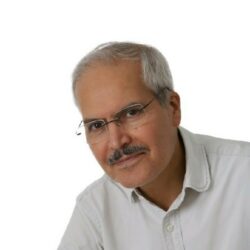Dr. Louahab Noui
Principal Optical Architect | TriLite
ABSTRACT
The mass adoption of Augmented Reality (AR) displays for the consumer market is dependent on meeting key comfort requirements, including visual and wearable. Mass adoption also depends on AR displays to be mass-manufacturable with high-yield processes. Experts in the field have been developing various display technologies to best address these requirements, with different degrees of success.
In this paper, we present the unique characteristics of the software-defined Trixel 3 laser beam scanner (LBS) display. The paper also describes how the different optical components are combined to achieve the best optical performance in combination with the software and firmware to generate the unique signal patterns to recreate imagery from an electro-mechanical resonant system. This unique hardware/software combination makes the Trixel 3 the brightest, the lightest, and the most compact AR light engine to address the above key requirements and is also key for mass production without the need for extremely tight tolerances. The analysis shows the advantages of using the laser light source in terms of image resolution, high luminous flux efficiency, and the small footprint and the low mass of the Trixel 3.
Areas:
- display engines, light sources, devices and building blocks, including laser sources, MEMS mirrors, micro-LED displays, LCoS, and packaging solutions
OR
- impact of optical architectures on the human visual perception and user experiences in VR/AR/MR displays.
BIOGRAPHY
Dr. Louahab Noui is a Principal Optical Architect at TriLite Technologies in Austria, working on the development of Laser Beam Scanners for Augmented Reality (AR) displays. He received his PhD in instrumentation and analytical science from University of Manchester Institute of Science and Technology (UMIST), UK. He worked for Bio-Rad as an R&D engineer on new product development of confocal and multiphoton laser scanning microscope systems. He has a long experience working for BAE Systems, UK, on new HUDs and head mounted displays using LCoS, DMD and waveguides. He also extended his experience after joining Surrey Satellite Technology (SSTL), UK, to work on design and AIT of optical payloads for earth observation satellites. He contributed to a total of 5 satellites imagers which were launched between 2015 and 2018. He since worked for Daqri Labs, UK, on developing AR displays for enterprise applications. He published numerous scientific papers and patented a number of inventions.